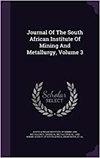利用三维成像系统估算煤的密度:RhoVol
IF 0.9
4区 材料科学
Q3 Materials Science
Journal of The South African Institute of Mining and Metallurgy
Pub Date : 2022-09-20
DOI:10.17159/2411-9717/2004/2022
引用次数: 0
摘要
煤沉浮试验结果绘制为可洗性曲线。对这些曲线的分析指出了煤的最有效的净化方法。水槽和浮子实验依赖于采样,具有破坏性,并且使用有毒化学物质。目前的研究介绍了一种基于称为RhoVol的3D成像系统的替代方法,其中单个粒子的密度是通过质量和体积测量来确定的。对利用RhoVol进行的煤样密度测量结果进行了定量误差分析,找出并研究了影响误差的主要因素。结果表明,该方法的缺点在于无法检测到粒子中隐藏的凹点,从而导致粒子体积的高估。此外,从三维轮廓图像中难以捕捉孔隙度和裂纹对煤颗粒体积的影响。RhoVol数据与sink和float测试结果之间的不匹配导致尝试应用神经网络(NN)和线性回归技术来产生一个完全可靠的模型,用于校正和估计煤密度。神经网络方法提供了优于线性回归的预测能力,并且估计的密度分布与sink和float分析一致。使用神经网络模型估计密度的均方根误差小于0.05 g/cm3。本文章由计算机程序翻译,如有差异,请以英文原文为准。
Estimation of coal density using a 3D imaging system: RhoVol
The results of coal sink and float tests are plotted as washability curves. Analysis of these curves indicates the most effective method by which the coal can be cleaned. Sink and float experiments are sampling-dependent, destructive, and use toxic chemicals. The present research introduces an alternative method based on a 3D imaging system called RhoVol, in which the density of individual particles is determined from mass and volume measurements. A quantitative error analysis was conducted on coal sample density measurements obtained by RhoVol, and the main factors influencing the errors identified and investigated. The results show that the drawback of this technique is related to its not being able to detect hidden concavities in the particle, resulting in an overestimation of particle volume. Furthermore, it is difficult to capture the impact of porosity and cracks on the volume of coal particles obtained from 3D silhouette images. This mismatch between the RhoVol data and sink and float test results has led to attempts to apply neural network (NN) and linear regression techniques to produce a fully reliable model for correction and estimation of coal density. The NN approach offers superior predictive capability over linear regression, and the estimated density distribution is in line with the sink and float analysis. The root mean square error in estimation of density using the NN model was less than 0.05 g/cm3.
求助全文
通过发布文献求助,成功后即可免费获取论文全文。
去求助
来源期刊
CiteScore
1.50
自引率
11.10%
发文量
61
审稿时长
4-8 weeks
期刊介绍:
The Journal serves as a medium for the publication of high quality scientific papers. This requires that the papers that are submitted for publication are properly and fairly refereed and edited. This process will maintain the high quality of the presentation of the paper and ensure that the technical content is in line with the accepted norms of scientific integrity.

 求助内容:
求助内容: 应助结果提醒方式:
应助结果提醒方式:


